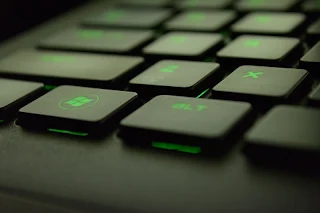The great thing about computer systems is that they can do any action much faster than humans. But telling them what to do is makes it usually a slow process. Well, there’s a fix.
Yes, I’m talking about shortcut keys. To perform a keyboard shortcut, you need to press two, three or sometimes four keyboard keys simultaneously. A single, quick shortcut can accomplish the same action as dragging your mouse across the screen and then clicking through several menus or hunting down buttons.
We are including a list of Keyboard shortcuts. These keyboard shortcuts will help windows users to work smarter and often quicker. You will find a huge list of various Windows shortcut keys below for use in places like the web browser, File Explorer, for use generally and we also included brand new windows 10 keyboard shortcuts.
These six shortcut keys are the most essential to know, however. These shortcut keys are compatible with all versions of windows (Windows Vista, Windows XP, Windows 7, 8, 8.1, 10).
- Save (CTRL+S)
Use this key to save the selected file or text to the desired folder.
- Copy (Ctrl + C)
Copy a selection to the Windows clipboard to be pasted later.
- Paste (Ctrl + V)
Paste a previously copied or cut file/folder/text into an app.
- Cut (Ctrl + X)
Delete a selection and copy it to the Windows clipboard to be pasted later.
- Select All (CTRL+A)
You can select all the folders or files in any folder, or all the text in and file by clicking and dragging the mouse. But it can also be done by wasting less time by using shortcut keys CTRL+A.
- Undo (CTRL+Z) and Redo (CTRL+Y)
Most of the programs have two (undo and Redo) buttons at the top while others haven’t. In such case, you can use CTRL+Z for undoing and CTRL+Y for redoing an action.
- Zoom in (CTRL++) and Zoom out (CTRL+-)
Most of the websites have small text sizes and hard to read and most of them having zoomed texts and photos. But, instead of moving closer to the screen, you should use keyboard shortcuts to make it comfortable. Use CTRL++ to zoom in and CTRL+- to zoom out any content.
- CTRL+ALT+DEL
This was the first keyboard shortcut most users learned. In Windows XP and Vista this shortcut brings up Windows Task Manager while in Windows 7 and up versions it brings up a list of options including task manager. Task Manager is useful for killing running Processes.
- Get Help (F1)
Use the F1 key to get help with the task that is currently active. Press F1 while at the Windows desktop for help with Windows.
- Destroy a file (Shift + Delete)
Use to delete a selected file or folder without moving it to the Recycle Bin.
- File properties (Alt + Enter)
This shortcut is used to quickly find a file’s property information. The keypress works from the desktop, Windows Explorer, or File Explorer.
- Close a window or tab (Alt + F4)
Close the currently active window. This shortcut is handier when you want to close a tab that does not have a quit button.
- Run command (Windows key + R)
- Minimize window (Windows key + Down arrow)
Remove the current window from the desktop without closing. You can maximize the window again.
- Maximize window (Windows key + Up arrow)
Change the size of the active window to fill the screen.
- Minimize all windows (Windows key + M)
This shortcut key is used to minimize all active windows.
Windows 10 and 8 Shortcut keys
- search {Windows key + S (Windows 10)} {Windows key + F (Windows 8)}
Open a search window to find apps, folders, files, settings, and websites.
- Search for computers (Windows key + Ctrl + F)
This key is used to find computers on a local network.
- Lock the computer (Windows key + L)
Use this key to lock the computer to prevent unauthorized access when you are not active.
- Share (Windows key + H)
Open the Share menu where you can send messages and files or messages to others.
- File Explorer (Windows key + E)
This key will open a File Explorer window to browse different files and folders.
- Settings (Windows key + I)
Open the Settings and you can change the behavior of different features.
- View active apps (Windows key + Tab)
By using these keys you can be able to resize and display all recently active windows to fit proportionally on the screen. Repeat this to return the windows to their previous position.
- Windows desktop (Windows key + D)
Used to Hide the Start screen or minimize all active windows and menus to display the desktop. Repeat this to restore the previous view.
This shortcut key is used to open the Run dialog box.
- Switch between windows (Alt + Tab)
Display all active windows or tasks. Switch to another window by repeatedly pressing the tab key.

Post a Comment (0)